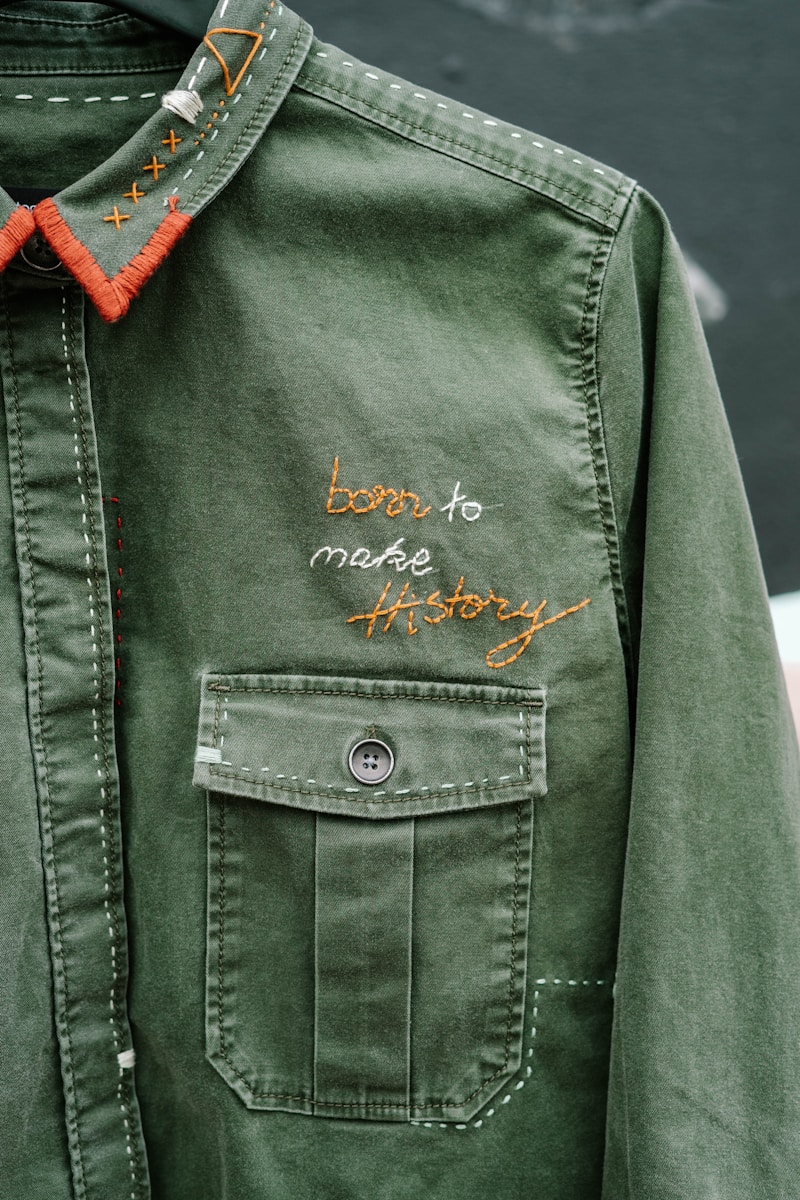Unlocking the Art of Handcrafted Embroidery Techniques: A Journey Through Textiles
Unlocking the Art of Handcrafted Embroidery Techniques: A Journey Through Textiles
Introduction to Handcrafted Embroidery Techniques
Embroidery has been an essential form of artistic expression for centuries, offering a unique way to tell stories, celebrate cultural heritage, and transform fabrics into vibrant artworks. Among the various techniques, handcrafted embroidery stands out for its intricate designs and personal touch. In this article, we will explore various handcrafted embroidery techniques, delve into their histories, analyze their cultural significance, and provide practical tips for enthusiasts looking to enhance their skills.
The Diverse World of Handcrafted Embroidery
Handcrafted embroidery techniques include a wide range of methods that vary significantly by culture and region. From the detailed patterns of Indian Kantha to the mesmerizing, textured work found in Japanese Sashiko, each technique has a story. This guide will outline some of the most popular forms, ensuring that you can appreciate their unique characteristics.
| Embroidery Technique | Region | Description |
| Kantha | India | Using running stitches to create intricate patterns and designs, often on layers of fabric. |
| Sashiko | Japan | A form of decorative reinforcement stitching, traditionally done in white thread on indigo fabric. |
| Cross-Stitch | Global | A technique where X-shaped stitches are sewn in a grid pattern to create images and patterns. |
| Blackwork | England | Involves creating designs using black thread on white or light-colored fabric, characterized by geometric patterns. |
Exploring Unique Techniques
1. Kantha Stitching - A Heritage of Healing
Originating from the rural regions of Bengal, Kantha stitching is traditionally performed by women who repurpose scraps of old saris into comforting quilts. This form of embroidery is marked by its running stitch technique, creating unique and colorful patterns. Historically, embroidery was not just a means of artistic expression; it also served practical purposes, including patching up worn garments. Today, enthusiasts celebrate Kantha for its eco-friendly ethos and charming aesthetics.

2. Sashiko - The Beauty of Simplicity
On the other side of the globe, Sashiko originated as a practical form of stitching to reinforce worn-out garments, all while creating stunning visual designs. The term "Sashiko" means "little stabs", which aptly describes the uniform, tiny stitches used. It is characterized by its repeated geometric patterns and has become a beautiful representation of Japanese aesthetics. This technique transcends mere sewing; it's a philosophy of sustainability, quality, and mindfulness in crafting.
3. Cross-Stitch - A Timeless Classic
Cross-stitch embroidery has a global presence, cherished for years for its versatile application and ease of learning. The X-shaped stitches create images and text on fabric, making it a favorite for both beginner and advanced crafters. With various patterns available on the market, cross-stitch projects can range from simple samplers to intricate masterpieces. It remains a popular pastime, with many online communities dedicated to sharing patterns and inspiration.
4. Blackwork - The Art of Contrast
Blackwork is perhaps one of the most striking techniques in the embroidery realm, historically used in England. This technique employs black thread on white or light fabric, producing a beautiful contrast. Traditionally seen as a decorative means to embellish clothing, it has evolved into a standalone form of art. Today, many artisans utilize this technique to create stunning wall hangings or other decorative items.
Mastering Handcrafted Embroidery Techniques
Learning handcrafted embroidery techniques can be an incredibly rewarding process. Here are some essential tips to help you along the way:
- Start Simple: Begin with basic patterns to understand stitch techniques before moving on to more complex designs.
- Practice Regularly: The more you embroider, the better you will become. Set aside dedicated time for practice.
- Join a Community: Share your work and experiences with fellow embroidery enthusiasts, potentially gaining insights and inspiration from others.
- Invest in Quality Materials: Use high-quality threads, fabrics, and needles to elevate your projects and ensure durability.
- Explore Online Resources: There are countless blogs, tutorials, and videos that can provide guidance and ideas for your projects.
The Cultural Significance of Handcrafted Embroidery
Understanding the cultural significance of handcrafted embroidery techniques allows us to appreciate their roles beyond mere aesthetics. These techniques often carry deep-rooted traditions that represent communities' identities, histories, and values. For example, Kantha stitching is not just about creating patterns; it reflects the lives and experiences of women in Bengal. Similarly, Sashiko epitomizes Japanese culture's spirit of simplicity and thoughtfulness.
Conclusion
Handcrafted embroidery techniques serve as more than just methods to adorn textiles; they tell stories, preserve cultures, and foster community. As you embark on your journey to master these techniques, remember to embrace the simplicity, patience, and love that come with every stitch. Whether you choose to explore Kantha, Sashiko, cross-stitch, or blackwork, each stitch is a step toward connecting with history and creativity.
In summary, the world of handcrafted embroidery is vast and vibrant. By investing time and passion into exploring these techniques, you will not only improve your skills but also gain a profound appreciation for the artistry involved. Remember to keep learning, stay curious, and most importantly, enjoy the artistic journey embroidery provides. Happy stitching!
